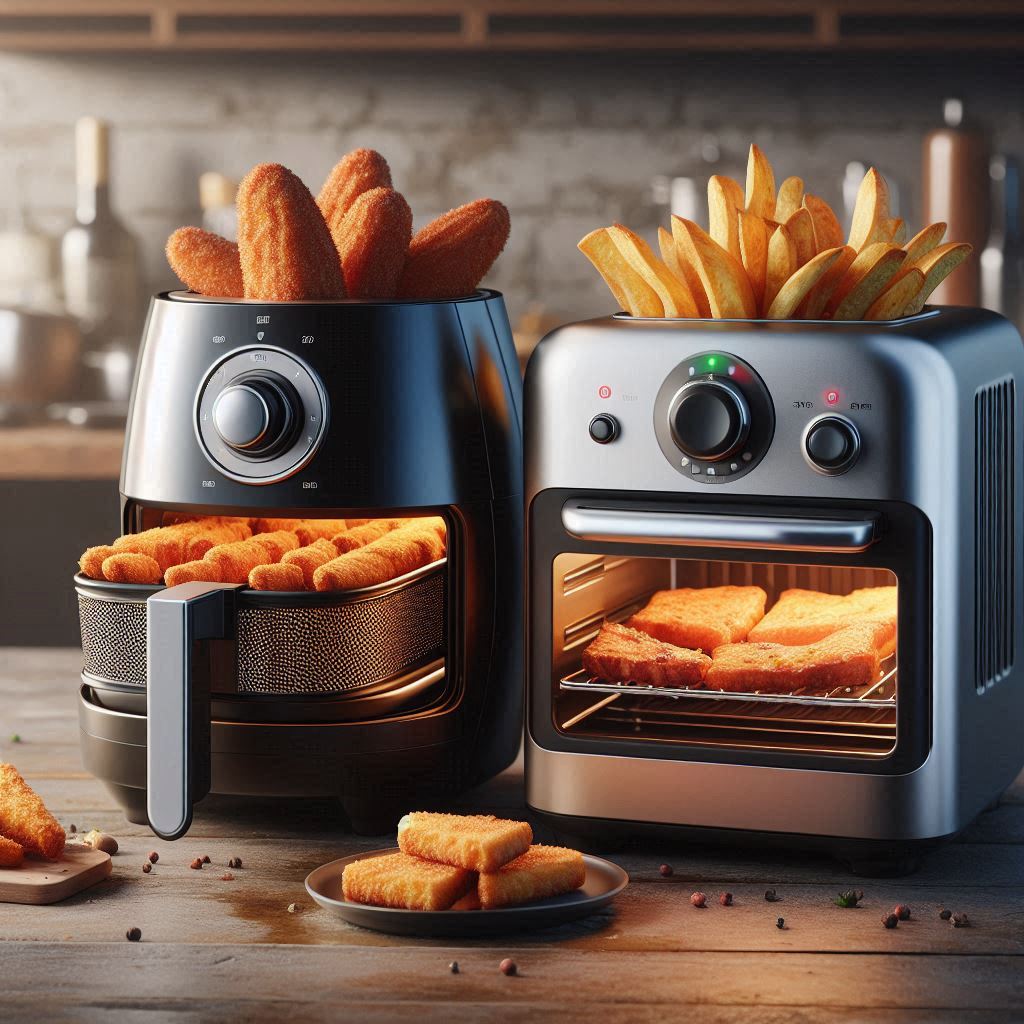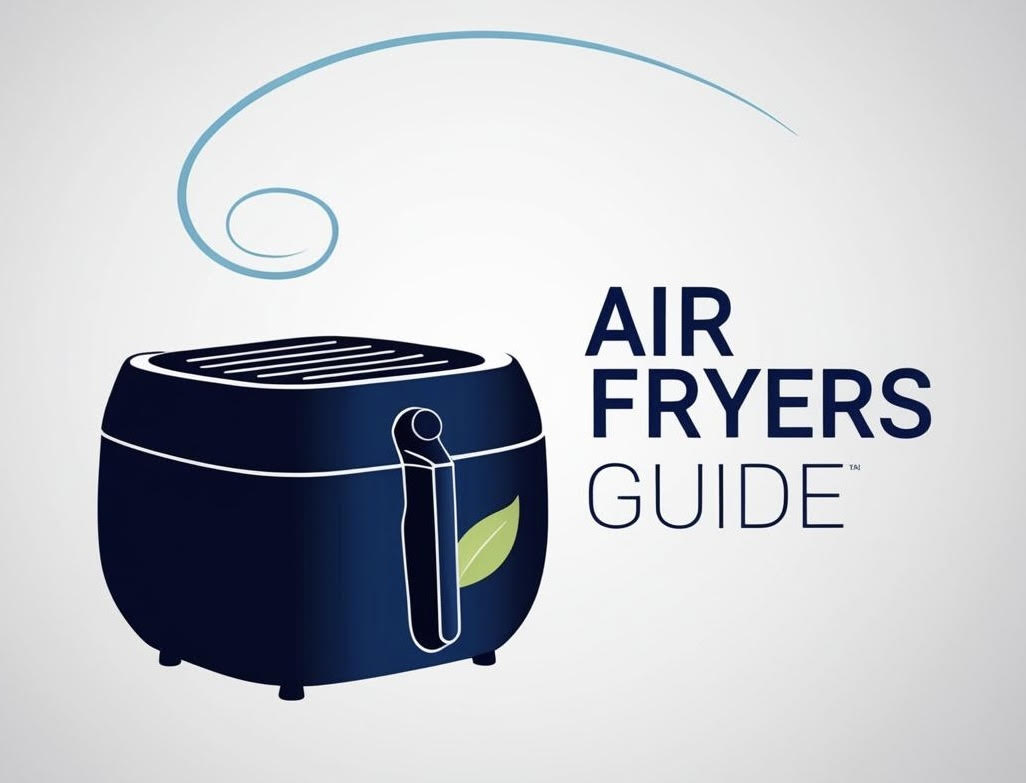Air Fryer vs. Convection Oven: What's the Difference?

It's a question many people ask when considering an air fryer: aren't they just small convection ovens? While they both utilize the same core principle of circulating hot air to cook food, there are crucial differences in their design, performance, and ideal use cases. Understanding these distinctions can help you decide which appliance is best for your kitchen, specific cooking needs, or how to best utilize both if you happen to own them.
How They Work: The Science of Convection Cooking
Both air fryers and convection ovens rely on the principle of convection cooking – using a fan to actively circulate hot air around the food. This method is different from a traditional oven (which heats air but doesn't circulate it with a fan) where hot air naturally rises, potentially leading to uneven temperatures and longer cook times. By actively moving the hot air, both convection ovens and air fryers aim to speed up cooking, promote more even browning, and help create a crispy exterior on food surfaces.
The core difference, however, lies in *how intensely* they apply this principle and the specific design built to achieve that intensity.
Key Differences Explained
Though they share convection technology, air fryers and convection ovens differ significantly in practice:
Mechanism and Airflow Intensity
- Air Fryer: Designed with a much smaller cooking chamber and a very powerful, high-speed fan positioned close to the food, often directly above it. This creates extremely rapid, highly concentrated, and turbulent airflow. This intense circulation blasts hot air directly onto the food surfaces, mimicking the effect of deep frying by quickly dehydrating the exterior and creating a crispy outer layer.
- Convection Oven: A standard-sized kitchen oven (or sometimes a larger countertop model) equipped with a fan (usually located in the back) that circulates air throughout the larger oven cavity. The airflow is much less intense and less focused compared to an air fryer, providing a more gentle, even heat distribution suitable for a wider range of cooking tasks over a larger area.
Size and Capacity
- Air Fryer: Generally much smaller and designed primarily for cooking single servings or small batches of food. Basket-style air fryers have a round or square basket with limited flat surface area, which can restrict how much food can be cooked in a single layer (essential for crisping!). Oven-style air fryers or air fryer toaster ovens offer more horizontal capacity but are still typically much smaller than a full oven. (See buying guide section on capacity).
- Convection Oven: A full-sized kitchen oven (or often a larger countertop unit that can replace one) capable of cooking large roasts, multiple trays of cookies, or several dishes in different sizes simultaneously.
Speed and Efficiency
- Air Fryer: Heats up incredibly quickly (often just 2-5 minutes) and cooks food significantly faster than a standard convection oven due to the intense, close-range airflow. This makes it highly efficient for quick meals or small batches.
- Convection Oven: Takes longer to preheat to the desired temperature (typically 10-15 minutes or more) and generally cooks slower than an air fryer, though still faster and more evenly than a traditional oven without convection.
Cooking Results & Texture
- Air Fryer: Excels specifically at achieving exceptional crispiness, browning, and "fried-like" textures on smaller items due to the focused, high-speed air. Ideal for recreating the results of deep frying with less oil. Foods like crispy chicken wings, french fries, and mozzarella sticks turn out remarkably crunchy.
- Convection Oven: Provides very even cooking throughout a large space, which is ideal for baking multiple items simultaneously, roasting large pieces of meat evenly, or cooking dishes where overall doneness is more important than intense surface crisping. It can crisp food surfaces, but typically not to the same intense degree as a dedicated air fryer.
Versatility
- Air Fryer: Primarily focused on rapid, crispy cooking and reheating. Some models offer secondary functions like roasting, baking (for small items), or dehydrating, but these are limited by the appliance's size, shape, and temperature range.
- Convection Oven: Offers a full range of cooking functions including baking, roasting, broiling, toasting (in toaster oven versions), and sometimes dehydrating or proofing, suitable for a vast variety of dishes and sizes that fit within its large cavity.
For a side-by-side look at various cooking methods, see our comparisons like Air Fryer vs Deep Fryer or Air Fryer vs Standard Oven.
Air Fryer vs. Convection Oven: Quick Comparison Table
Here's a summary of the main differences:
| Feature | Air Fryer | Convection Oven |
|---|---|---|
| Mechanism | Intense, high-speed air circulation in a small chamber | Gentle air circulation in a large cavity |
| Primary Result | Aggressive crisping, "fried" texture | Even cooking, faster roasting/baking than traditional oven |
| Size/Capacity | Small (1-8 qt, or small oven style), best for 1-4 servings | Large (full oven or large countertop), best for multiple dishes/large items |
| Speed | Very fast preheating & cooking | Faster than traditional oven, slower than air fryer | Oil Used | Minimal (tablespoon or less) | Depends on recipe (roasting often uses more than air frying) |
| Versatility | Limited (best for crispy/reheating, some baking/roasting) | High (baking, roasting, broiling, etc.) |
Can an Air Fryer Replace a Convection Oven?
For most households and cooking needs, a dedicated air fryer is usually not a direct, one-to-one replacement for a full-sized convection oven. The significant difference in capacity and the broader range of functions (like traditional baking, broiling, or cooking multiple dishes simultaneously) that a convection oven offers mean they serve different primary purposes.
However, if you rarely use your large oven and primarily cook single servings or meals for just 1-2 people, a larger oven-style air fryer or a feature-rich air fryer toaster oven might cover most of your daily cooking needs, including some baking and roasting tasks, potentially making a large oven less essential for simple meals. These countertop combos blend the features (see Air Fryer vs Toaster Oven comparison).
It's also worth noting that many modern convection ovens now include dedicated "Air Fry" modes. These modes typically use a faster fan speed than standard convection and often come with a special basket or tray. They work better than standard convection for crisping food surfaces, but they still may not quite match the sheer intensity and speed of airflow of a dedicated, compact basket-style air fryer due to the much larger cavity size. For the most aggressive air frying results, a dedicated unit often still has the edge.
Ultimately, they are complementary appliances. An air fryer excels at specific tasks (fast crisping of small items), while a convection oven is the kitchen workhorse for larger-scale, versatile cooking.
If you're still deciding which type of air fryer or oven is right for you, check out our Air Fryer Buying Guide or our list of the Top 10 Air Fryers to see various types and models available.
Conclusion: Different Tools for Different Jobs
While both air fryers and convection ovens use circulating hot air, they are designed with different strengths and purposes in mind. The air fryer is a specialized tool for achieving fast, intense crispiness on small items with minimal oil, perfect for snacks, sides, quick meals, and reheating. The convection oven is a versatile workhorse for baking, roasting, and cooking larger quantities evenly. Understanding their key differences empowers you to choose the right appliance for your needs or utilize both effectively in your kitchen!
